In the world of metal fabrication, laser cutting has become an essential tool for precise and efficient material processing. But when it comes to dealing with tubes and pipes, a standard flat sheet laser cutter just won’t do. That’s where the specialized world of laser pipe cutting machines comes in.
This article will serve as your one-stop guide to understanding laser pipe cutting machines, their applications, and the factors to consider when choosing the right one for your needs.
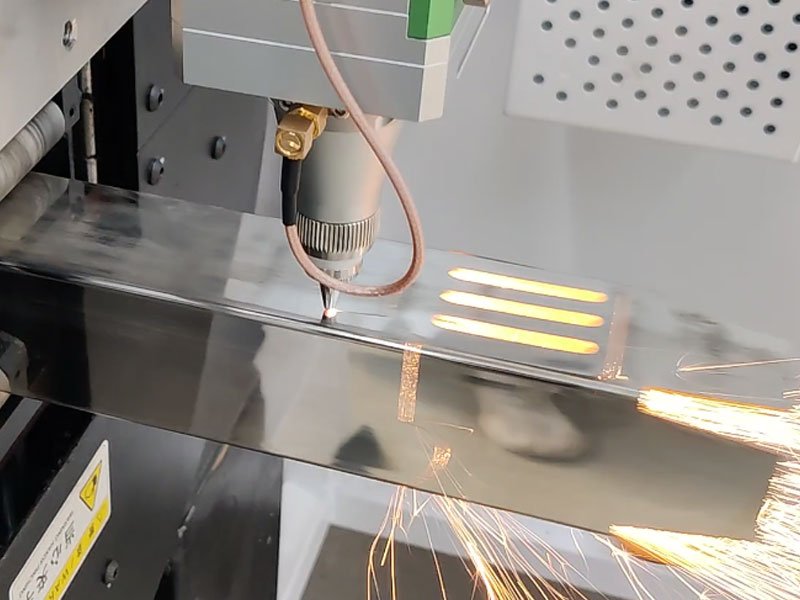
What Is Laser Pipe Cutting Machine
A laser pipe cutting machine is a specialized tool used in the metal fabrication industry to cut and shape pipes and tubes with precision. Unlike traditional cutting methods, such as sawing or grinding, laser pipe cutting machines use a high-powered laser beam to melt or vaporize the material, resulting in clean and accurate cuts.
These machines are equipped with advanced computer numerical control (CNC) systems that allow for precise control over the cutting process. The CNC system follows a pre-programmed design or pattern, guiding the laser beam along the pipe’s surface to create intricate shapes and contours.
Laser pipe cutting machines are commonly used in industries such as automotive, aerospace, construction, and plumbing. They offer numerous advantages over traditional cutting methods, including increased efficiency, reduced material waste, and improved accuracy.
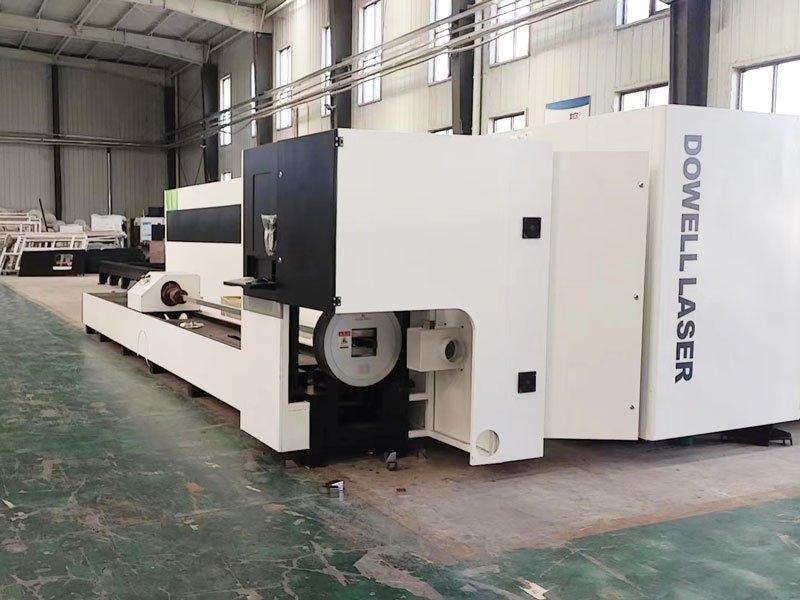
Benefits of Using Laser Pipe Cutting Machines
The use of laser pipe cutting machines offers several benefits for metal fabricators:
Précision:
Laser pipe cutting machines provide exceptional precision and accuracy. The high-powered laser beam can cut through pipes of various thicknesses without compromising on quality. This level of precision ensures that each piece is cut exactly as per the design specifications.
Efficacité:
Laser pipe cutting machines are incredibly efficient compared to traditional methods. They can cut through pipes at high speeds while maintaining consistent quality. This efficiency translates into faster production times and increased productivity for metal fabricators.
Polyvalence:
Laser pipe cutting machines can handle a wide range of materials, including stainless steel, carbon steel, aluminum, copper, and more. This versatility makes them suitable for various applications across different industries.
Minimal Material Waste:
Traditional cutting methods often result in significant material waste due to the width of the cutting tool. Laser pipe cutting machines, on the other hand, have a narrow laser beam that minimizes material waste. This not only saves costs but also reduces environmental impact.
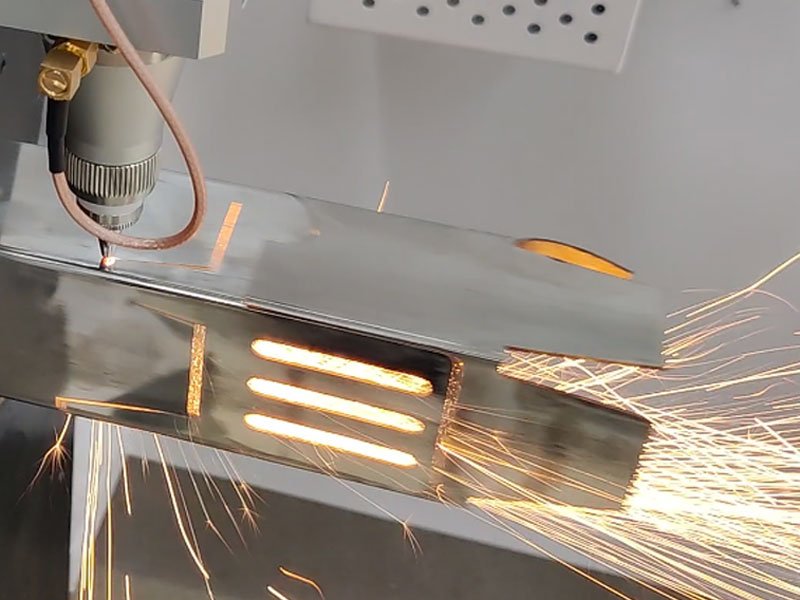
CNC Laser Pipe Cutter Applications
Laser pipe cutting machines find applications in various industries:
Furniture Manufacturing:
Cutting intricate designs and components for furniture frames, railings, and decorative elements.
Construction:
Laser pipe cutting machines are used in construction to fabricate structural components such as handrails, staircases, and support beams. The precision of laser cutting ensures that these elements fit together seamlessly.Creating customized pipe supports, brackets, and HVAC ductwork.
Industrie automobile :
The automotive industry relies on laser pipe cutting machines for fabricating exhaust systems, chassis components, and roll cages. The ability to create complex shapes and contours makes laser cutting ideal for these applications.Fabricating exhaust pipes, roll cages, and other tubular components for vehicles.
Agricultural Equipment:
Manufacturing frames, supports, and other structural elements for farm machinery.
Équipement médical:
Producing precise components for wheelchairs, medical furniture, and exercise equipment.
Oil and Gas Industry:
Cutting pipelines, wellheads, and other tubular structures.
Aérospatial:
In aerospace manufacturing, precision is crucial for components such as turbine blades and exhaust systems. Laser pipe cutting machines offer the accuracy and consistency required for these critical applications.
Plumbing:
In plumbing, laser pipe cutting machines are used to create precise cuts for pipes and fittings. This ensures leak-free connections and efficient plumbing systems.
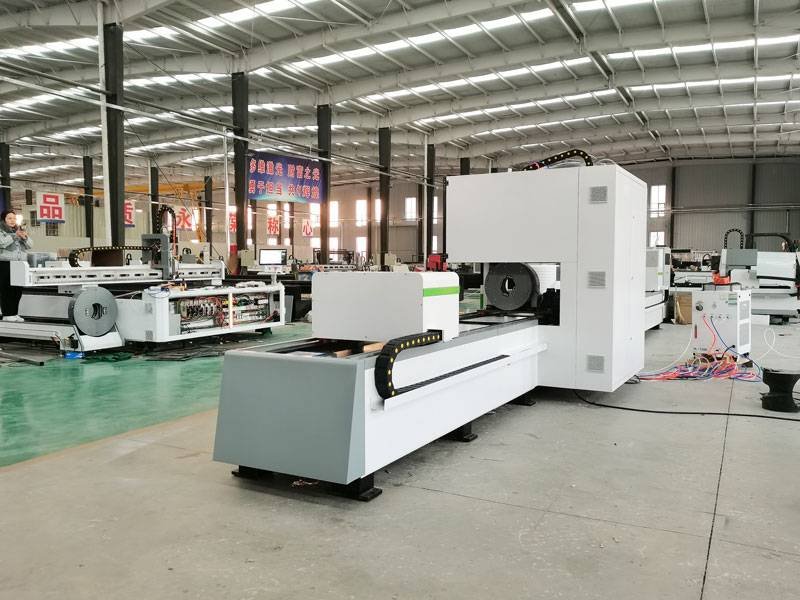
How Much Is Laser Pipe Cutting Machine Price
As a general estimate, laser pipe cutting machines can range in price from around $100,000 for basic models to upwards of $500,000 for high-powered machines with advanced features.
The cost of a laser pipe cutting machine can vary depending on several factors, including:
- Machine capabilities: Factors like laser power, cutting capacity (diameter and thickness), and additional features like automatic loading systems will influence the price.
- Brand and fabricant: Different fabricants offer varying price points based on their brand reputation and technology.
- New vs. Used: Used laser pipe cutting machines can be a more affordable option, but they might require additional maintenance and have limitations compared to newer models.
How to use a pipe laser cutter
Operating a laser pipe cutting machine involves several key steps:
- Machine Setup: This includes loading the desired pipe material onto the machine’s chuck and feeder system. The chuck securely holds the pipe in place, while the feeder allows for continuous processing of multiple pipes.
- Design Programming: The cutting pattern is uploaded into the machine’s control software. This digital design specifies the exact path the laser beam needs to follow for cutting the desired shapes.
- Calibration and Alignment: The laser head is calibrated to ensure precise positioning and focus of the beam. Additionally, the machine might perform checks for pipe imperfections like bowing, which might require adjustments in the cutting path.
- Cutting Process: Once everything is set, the cutting operation commences. The laser beam melts and vaporizes the material along the programmed path, creating clean cuts on the pipe.
- Part Unloading: After cutting, the finished pipe sections are unloaded from the machine, ready for further processing or assembly.
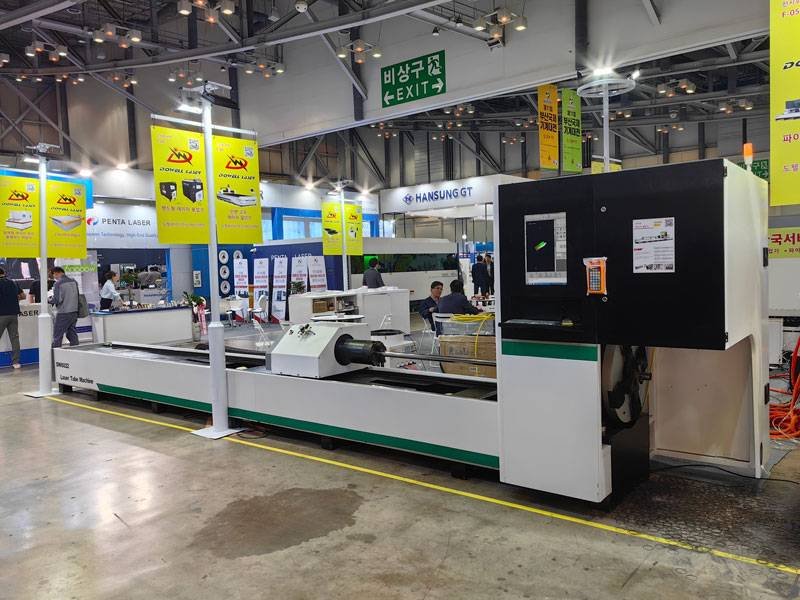
How to choose the best pipe cutting laser machine?
Selecting the right laser pipe cutting machine requires careful consideration of your specific needs and budget. Here are some key factors to evaluate:
- Pipe size and material compatibility: Ensure the machine can handle the diameter, thickness, and material type of pipes you intend to cut.
- Cutting speed and accuracy: Consider the level of precision and processing speed required for your production needs.
- Automation features: Evaluate the level of automation desired, such as automatic loading and unloading systems.
- Ease of use and operator training: Choose a machine with an intuitive interface and consider the training resources available.
- Maintenance requirements: Factor in the ongoing maintenance costs and service support offered by the fabricant.
Capabilities and Considerations for Laser Pipe Cutting
While the core functionalities of laser pipe cutting machines are established, there’s more to this technology than meets the eye. Let’s delve into some advanced aspects to consider:
Fiber Laser vs. CO2 Laser: In recent years, fiber lasers have become the dominant choice for pipe cutting due to their superior efficiency, faster cutting speeds, and ability to handle reflective materials.
Thick vs. Thin Wall Pipes: While fiber lasers excel at cutting thin and medium-gauge pipes
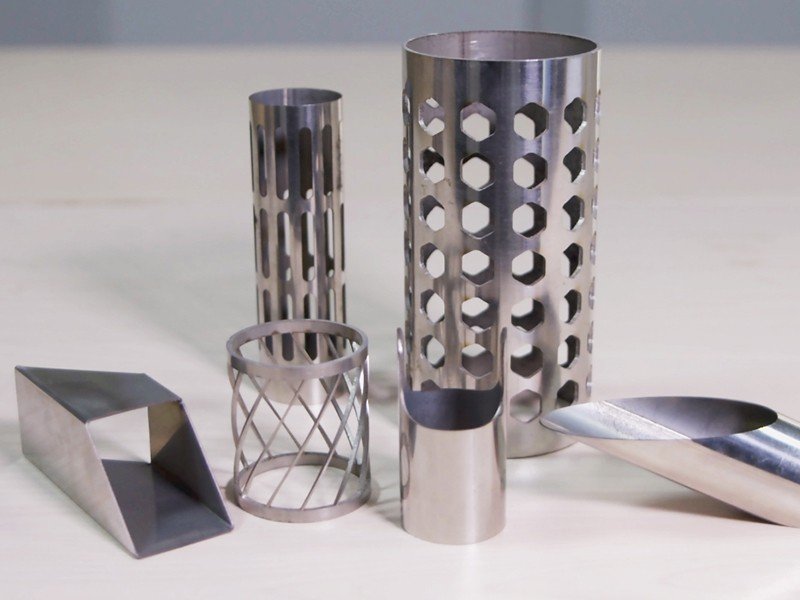
The Thick and Thin of Pipe Laser Cutting Machine
Laser pipe cutting machines can handle pipes of various thicknesses. The power output of the laser determines its ability to cut through thicker materials. Higher-powered lasers are capable of cutting through thick-walled pipes with ease.
Cutting Thick Pipes with Laser Technology
While fiber lasers have become the preferred choice for laser pipe cutting, their effectiveness in cutting thicker pipes has been a subject of discussion. Traditionally, CO2 lasers were considered more suitable for thicker materials due to their larger wavelength and ability to produce a wider kerf, allowing for material removal.
However, advancements in fiber laser technology, particularly collimating technology, have addressed these limitations. By employing collimating optics, fiber lasers can produce a wider beam, enabling them to cut thicker pipes effectively. Additionally, the ability to switch between narrow and wide beams allows for efficient processing of both thin and thick materials on the same machine.
Considerations for Thick Pipe Cutting
Despite the advancements, cutting thick pipes with laser technology still requires careful consideration of certain factors:
- Puissance laser : For thicker pipes, a higher laser power is necessary to penetrate the material and achieve clean cuts. Most laser pipe cutting machines for thick pipes typically range from 3kW to 6kW in power.
- Vitesse de coupe : Cutting thicker pipes generally takes longer than thinner pipes due to the increased material thickness. While fiber lasers offer faster cutting speeds compared to CO2 lasers, the overall cutting time for thick pipes will still be slower.
- Material Properties: The type of material being cut can also influence the cutting process. Some materials, such as high-strength steels, may require higher laser power or slower cutting speeds to achieve optimal results.
- Machine Stability: As the laser beam interacts with the thicker material, the forces exerted on the pipe and the machine increase. A robust and stable machine is essential to maintain precision and prevent vibrations that could affect cut quality.
Maintenance and Safety Tips for Laser Pipe Cutting Machines
To ensure optimal performance and safety when using a laser pipe cutting machine, follow these maintenance and safety tips:
Regular Maintenance:
Perform routine maintenance tasks such as cleaning the machine, inspecting and replacing worn parts, and lubricating moving components. Regular maintenance helps prolong the machine’s lifespan and ensures consistent performance.
Operator Training:
Ensure that operators are properly trained in using the laser pipe cutting machine. They should be familiar with safety protocols, machine operation, and troubleshooting procedures.
Équipement de protection:
Operators should wear appropriate protective gear, including safety glasses, gloves, and ear protection. This protects them from potential hazards such as laser radiation, sparks, and noise.
Conclusion
In conclusion, laser pipe cutting machines are invaluable tools in the metal fabrication industry. Their precision, efficiency, and versatility make them ideal for a wide range of applications. When choosing a laser pipe cutting machine, consider factors such as size, power output, CNC system capabilities, and your specific requirements. Proper maintenance and adherence to safety protocols are essential for optimal performance and operator safety.
